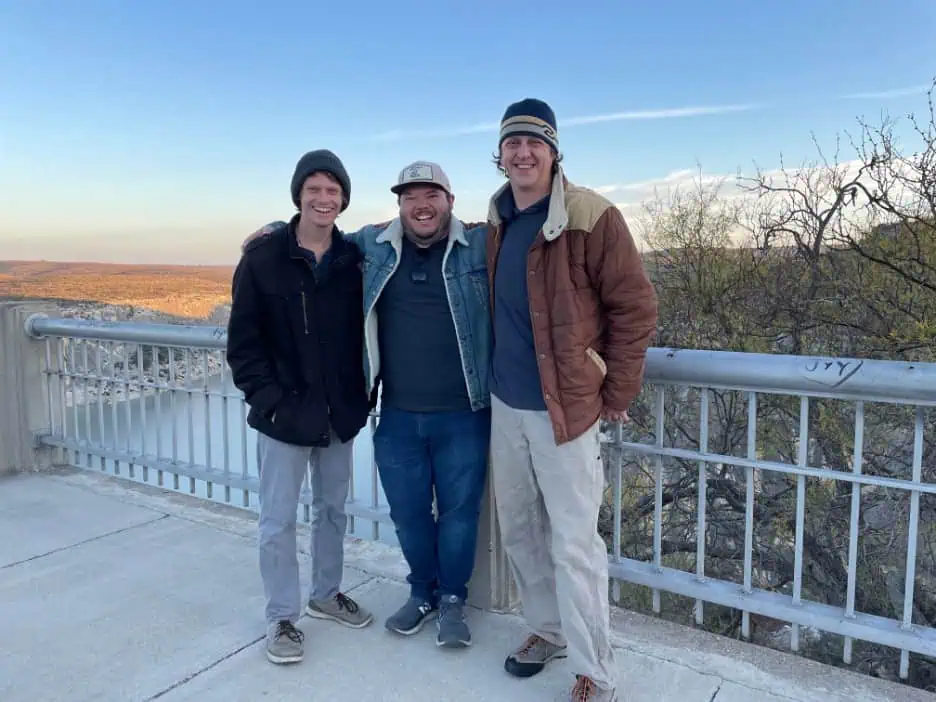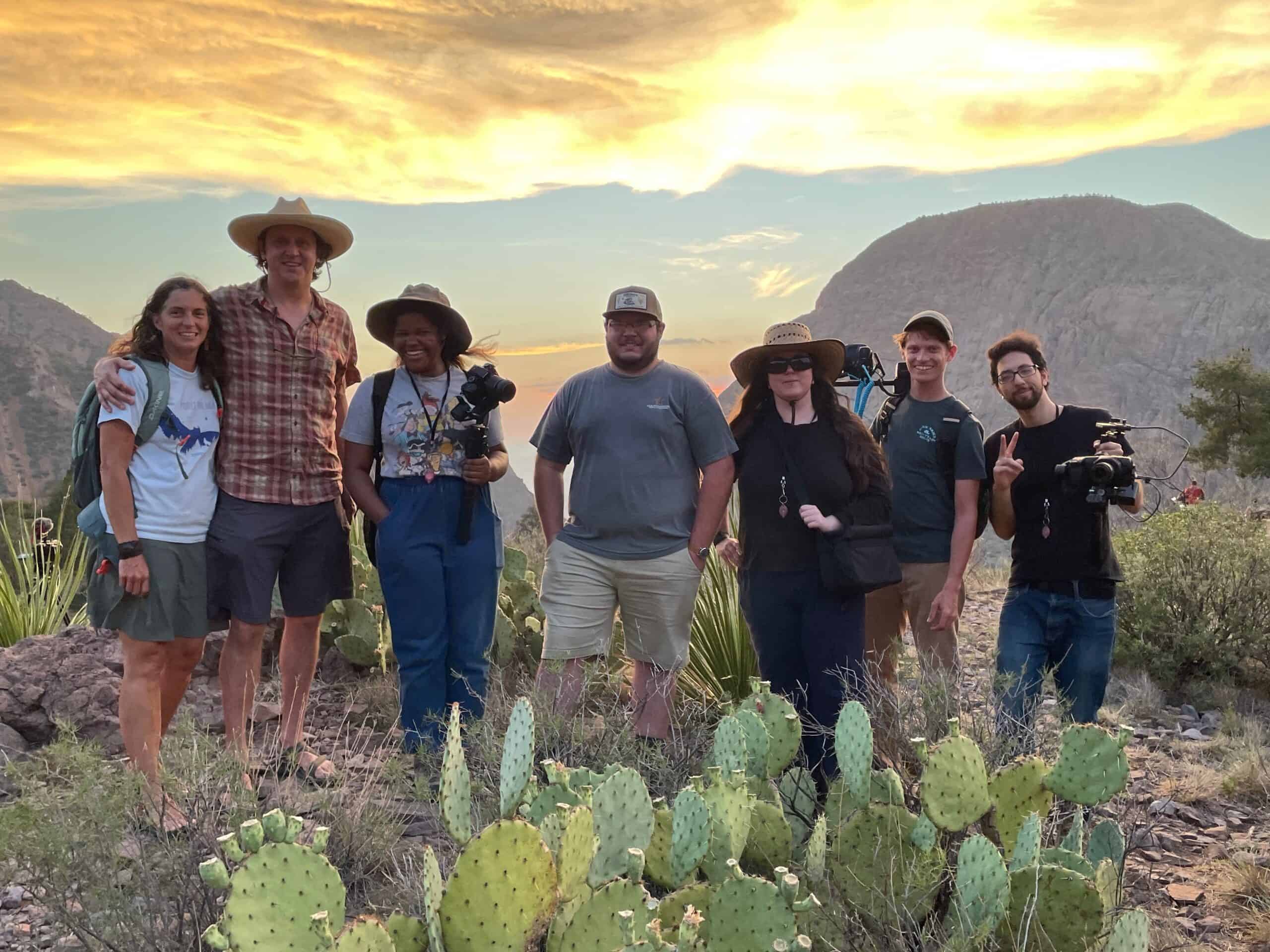To our ancestors, the dazzling night sky revealed the playground of the gods. Thanks to urban light pollution, these days too many of us rarely see stars at all, unless they're the celebrity kind. Director Elizabeth Buckley's new film, The Stars at Night, seeks to reconnect us to celestial magic – with the help of some parks whose dark skies bring the heavens alive.
Our film, The Stars at Night was inspired by a personal awakening to the fact that I had never seen the Milky Way.
Days after moving to the beautiful Texas Hill Country, and excited to finally see this majestic sight for myself, I was incredibly dismayed that it was impossible—even though my home was an hour from Austin and an hour from San Antonio, literally deep in the heart of Texas.
If the film was inspired by this idea, it was fueled by a group of people I now consider close friends. I came to find out they were all just as curious and passionate about the stars as I am.
After learning about light pollution I was really shocked. I had produced numerous television series and films about the environment, and yet I was oblivious to the issue of skyglow and its devastating impact to our ability to see the stars. Delving into the issue I found that according to Dark Sky International reporting on a 2016 study “80% of the world population lives under skyglow.”
In thinking more about it, I realized that I really wanted to tell a story; not just about the mechanics of rolling back light pollution, but about why we, as human beings, look to the stars and feel moved, sometimes to deep emotion and awe. I was deeply curious. Why was that? As a writer, thinking about ancient myths from around the world, I wondered: did the stars inspire original storytelling? And, more than anything I wanted to embark on a journey to finally see the Milky Way.
Becoming a part of a night sky group eager to build awareness of the issues and solutions to light pollution, I serendipitously found our core team.
The first and primary figure in this tale is the film’s producer, Ryan Sultemeier. When I pitched him the idea, his enthusiasm is what made the project real. As I recall, his response was. “That’s really cool!” With that, this film was born. Our teamwork of just two people could drive this project forward. I could write and conduct interviews, while Ryan could shoot, record sound, and edit.

One of our Comal Night Sky organizers mentoring the formation of our advocacy group was Amy Jackson, a graduate of Rice University and a Night Sky Educator with her non-profit, Starry Sky Austin. After one of our Night Sky group zooms in which I mentioned I was making the film, Amy reached out to volunteer both her services and that of her husband, Austin City Limits producer and cinematographer, Jonathan Jackson. I was astounded. “You know we don’t have any budget, right?” Yes, they knew. And they agreed.

At the heart of the film is a journey of four young filmmakers to the Big Bend National Park, well known to have one of the darkest skies in North America. I recruited four former students, all young filmmakers curious to tell their own story, some of which would be used on the longer film. We wrote for a grant in which everyone would be paid for their time and licensing fee for footage. We didn’t get the grant. While disappointed, Ryan and I hatched an idea. We created “The Executive Producer Experience” in which major donors would not only be a part of the film with their names in the opening credits, but also join us on our journey to discover some of the darkest skies in North America.
This endeavor worked— a little. We raised enough money for expenses, but nothing more. All fees would have to be deferred. Ryan and I gathered the group— were they in? They were!
And what followed was the formation of a tight knit team of people: filmmakers, experts, editors, our wonderful composer, an amazing storyteller, former students, and interns who wanted to join the ride in the making of this film for deferred fees. How did this happen? I believe for the joy of the process and for being a part of something that might actually make a difference. For me it has been exactly that: A JOY— all the way through. Not that it was ever exactly easy. But, it was always a joy.
Our journey took us to the Big Bend National Park where, to quote the National park website, “night skies are dark as coal.” We (as in Cinematographer Jonathan Jackson and Producer Ryan Sultemeier) shot some gorgeous astrophotography time-lapse in the Basin as well as Terlingua. It was June, the best time of year to see the Milky Way.
On another trip this team, along with student filmmaker Will Fitzpatrick, the team photographed a time lapse of the White Shaman Mural just outside of Seminole Canyon State Park, as well as drone footage of the Pecos River at sunrise.
To me, one of the most amazing things about this journey and the creation of this film is that it was made with almost no money, but primarily donations to my nonprofit, Environmental Arts Alliance, which covered expenses.
Yes, it was an enormous idea about the universe. Created with very little money. But that’s what we did.
Now, as we embark on this next phase to find distribution through festival, astronomy, community and national park screenings (which have already begun playing to sold out crowds) we never forget our mission: Not only to repay these wonderful filmmakers, but to build an impact campaign of awareness that We CAN save our night skies. This effort has already begun with screenings in Pakistan and in Kenya, and our goal is to continue to reach out to global communities through our night sky partners in Kenya, Pakistan, The Netherlands, and Vietnam. And, hopefully through you, our readers and supporters everywhere.
There are too many stories about the making of this film for one blog post. So, please stay tuned for more about our wonderful participants in this film! Storytellers, astronomers, mythologists, artists, astrophotographers, archeologists and more. All of the stories about the making of this film are about being joined together by a passion for the stars, united by a phrase coined by astrophotography contributor and expert, Babak Tafreshi: we are all “One people under one sky”.

Five Best Parks to See the Night Sky in Texas by Ryan Sultemeier
In the height of the pandemic in 2020 I was on a zoom call with my friend Betty Buckley, and she told me she was surprised she couldn’t see the Milky Way from her backyard in rural Texas. While kicking around ideas for a documentary, she mentioned that she thought there was an idea for a film in that frustration. Since then, we’ve been working on a documentary called The Stars at Night. The film explores light pollution, the cultural significance of the night sky, mythology, and how it’s all intertwined. While working on the film we were fortunate enough to visit some of the finest dark skies you can see in Texas. These aren’t all of them, but they’re some of the best:
5. Palo Duro Canyon
The Texas Parks and Wildlife website calls Palo Duro “The Grand Canyon of Texas,” and it’s true that it’s one of the most striking places you can visit in the Lone Star State. It’s half an hour south of Amarillo, and about eight hours from San Antonio. So, if George was headed to Palo Duro when he sang Amarillo by Mornin’ he really probably wasn’t getting in from the road till the break of dawn. It’s in a Bortle Scale Class 3 area, though just nearly in a Class 2. The Milky Way won’t be quite as identifiable here when compared to other parks on this list, however it will still provide beautiful starry skies and the Milky Way will be visible in most photographs (assuming it’s the right time of year, etc.).
4. Lost Maples State Natural Area
About 2 Hours and 45 minutes west of Austin lies Lost Maples State Natural Area. It’s just north of Vanderpool, Texas in a Bortle Scale Class 2 area. It’s one of the few places in Texas with beautiful Maple trees— and with more than 10 miles of trails to explore, the Sabinal River to float or fish, and an incredible 2,200-foot-tall cliff overlooking the river banks, there’s plenty to do before and after dark. Lost Maples is a great spot to spend a weekend away watching the stars go by.
3. Seminole Canyon State Park
Seminole Canyon is about an hour west of Del Rio, Texas and has one of the most spectacular sights on this list— The Fate Bell Shelter. It’s a rock shelter that juts about 40 feet in to the canyon wall and has evidence of over 8,000 years of occupation, the rock wall shows pictographs that are believed to be between 3,000 and 4,000 years old. This park is also in a Bortle Scale Class 2 area and has incredible night sky views above expansive vistas. If you’re in south Texas or are looking for a trip that will take you off the beaten path, Seminole Canyon is a fantastic place to check out.
Seminole Canyon is actually one of the places we visited while shooting The Stars at Night, we shot one of Amy Jackson’s interviews in the park, and had a chance to photograph the White Shaman Mural which is nearby, though it’s on land owned by the Witte Museum.
2. Enchanted Rock State Natural Area
Enchanted Rock is one of the most popular parks in central, Texas, and for good reason. It’s not too far of a drive from San Antonio or Austin, it’s close to the lovely town of Fredericksburg, and it has a gigantic granite dome. It’s got fantastic hiking, clear night skies, and I could go on, but if you live anywhere near central Texas, you already know all of this. This park is also in a Bortle Scale Class 2 area, so you’ll have no issue viewing the Milky Way with the naked eye. If you’re in the Hill Country and haven’t already, get out to Enchanted Rock.
Fun fact, we actually did some of our first testing near Enchanted Rock, before we really started shooting The Stars at Night, this was where we would make sure we actually could photograph what we wanted to see in the night sky.

1. Big Bend National Park
Everything you can say about the skies in Big Bend National Park, you can also say about the Big Bend region as a whole, and all of the other parks and natural areas near it— whether it’s Black Gap, BBNP, Big Bend Ranch State Park, Davis Mountain State Park, or just on the long stretches of lonely road between these places, the dark skies here are world class. Unless you’re willing to sail out into the ocean, it doesn’t get a whole lot darker than the Big Bend.
Most of the area is Bortle Scale Class 1, the exceptions being inside of, or just outside of, the small towns that dot the area. The region contains incredible hiking, kayaking, camping, and photography. When you’re tired of the high lonesome you can go into town and get great food and drinks in any of the small towns nearby. My personal favorite spot is the Starlight Theatre in Terlingua, Texas. In short, the Big Bend is a bucket list location for any serious stargazer or astrophotographer.
We were lucky enough to shoot the bulk of our film in Big Bend National Park and Terlingua, where we took a group of student filmmakers who hadn’t seen a clear night sky before out to take in the sights and reflect on where we are, how we got here, and what we’re going to do to make sure everyone after us has a chance to view a beautiful night sky. I’d highly recommend anyone wanting to travel out to see the stars do so, and the Big Bend is a great place to do it.
Learn more about Big Bend National Park from some of our creators.
Featured image at top: Stars over the Chisos Mountains in Big Bend National Park (Photo by Jonathan Jackson)


